Temples in Angkor Archaeological Park
Angkor wat archaeological park.
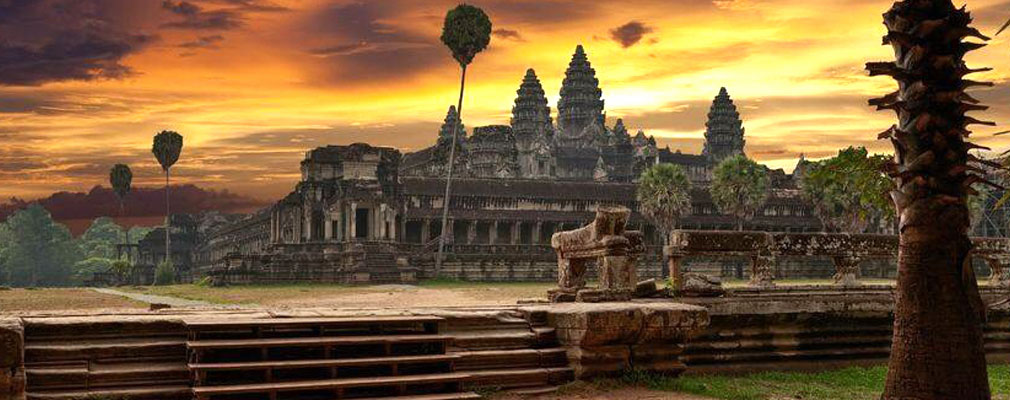
Is a UNESCO site sprawling temple complex located in Siem Reap, Cambodia. It was originally constructed as a Hindu temple for the Khmer Empire in the 12th century, but was later converted to a Buddhist temple. The temple is known for its impressive architecture, including its towering spire and intricate carvings. Its history is complicated, with periods of construction, destruction, and restoration over the centuries. Today, Angkor Wat is one of the most popular tourist attractions in Southeast Asia.
Angkor Thom with around 200 large Buddha heads.
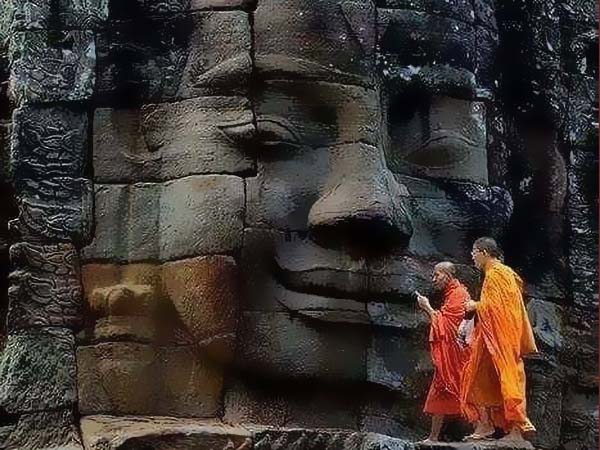
Angkor Thom is a large temple complex located in the ancient city of Angkor, Cambodia. It was built during the reign of King Jayavarman VII in the early 12th century as his state temple and as a symbol of his power. The temple is characterized by its intricately carved stone walls, towering gates, and elaborate internal architecture. It is considered one of the most significant archaeological sites in Southeast Asia and is a popular tourist destination. Visitors can explore the temple on foot or by bike, and there are several guided tours available. Angkor Thom is also home to several important historical artifacts, including the famous Bayon Temple, which is renowned for its unique rock-carved faces
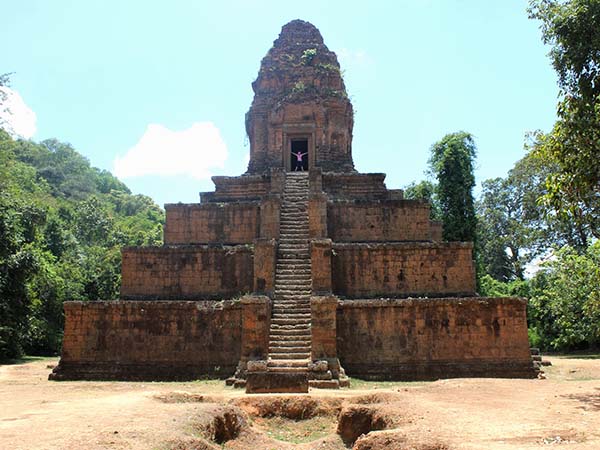
Baksei Chamkrong is a small Hindu temple located in the Angkor complex, Cambodia. It was built in the late 10th century during the reign of King Rajendravarman II (944-968) and dedicated to the Hindu god Shiva. The temple is known for its unique pyramid-shaped structure, which is reminiscent of the Khmer architectural style. Despite its small size, Baksei Chamkrong is intricately decorated with intricate carvings and bas-reliefs, showcasing the craftsmanship of the Khmer artisans of that era. It’s often visited by tourists exploring the Angkor Archaeological Park due to its historical significance and architectural beauty.
Banteay Chhmar was built in the late 12th and early 13th century
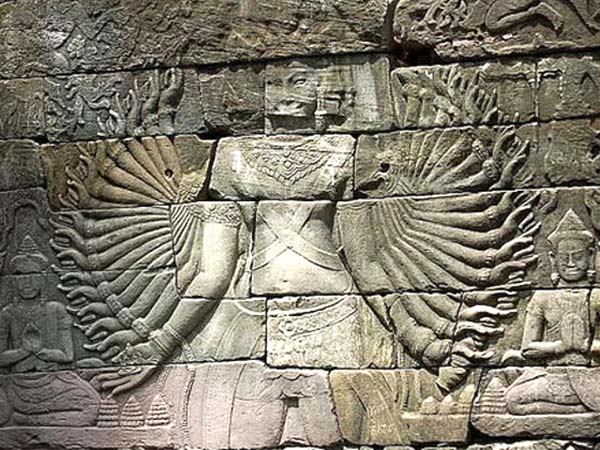
Banteay Chhmar was built in the late 12th and early 13th centuries during the reign of King Jayavarman VII, who also built Angkor Thom and the Bayon Temple. Banteay-Chhmar is a temple complex located in Cambodia’s Banteay-Chhmar district. It was built in the 12th century during the Khmer Empire and is known for its impressive brick walls and towers, intricate carvings, and stunning views of the surrounding countryside. The temple complex is UNESCO World Heritage site and is a popular tourist destination, drawing visitors from all over the world.
Banteay Samré Temple is a stunning Angkor temple located near the eastern gate of the Angkor Thom

Banteay Samré Temple is a stunning Angkor temple located near the eastern gate of the Angkor Thom complex in Siem Reap, Cambodia. Here’s some key information about it.Banteay Samré is known for its well-preserved architecture, which reflects the classic Khmer style of the Angkor period. It consists of a central sanctuary surrounded by four concentric enclosures, similar in layout to Angkor Wat but on a smaller scale.
History: The temple was built in the mid-12th century during the reign of King Suryavarman II, who is also credited with the construction of Angkor Wat. Banteay Samré is dedicated to the Hindu god Vishnu, evidenced by the many Vishnu sculptures found within the temple.
One of the distinctive features of Banteay Samré is its intricate carvings, particularly on the lintels and doorjambs, depicting various Hindu mythological scenes and religious motifs. The temple also features well-preserved bas-reliefs, similar to those found in other Angkorian temples.
Visiting: Banteay Samré is slightly less visited compared to some of the more famous Angkor temples like Angkor Wat and Bayon, making it a quieter and more serene spot for exploration. Visitors to Siem Reap often include Banteay Samré in their temple itinerary due to its proximity to Angkor Thom and other major temple complexes.
Efforts have been made to conserve and restore Banteay Samré in recent years to ensure its preservation for future generations. The temple is part of the Angkor Archaeological Park, a UNESCO World Heritage Site, which helps in its protection and maintenance. Overall, Banteay Samré Temple offers visitors a glimpse into the rich history and architectural grandeur of the Angkor civilization, making it a must-visit destination for anyone interested in ancient Khmer culture and heritage.
Banteay Samré Temple is a stunning Angkor temple located near the eastern gate of the Angkor Thom complex in Siem Reap, Cambodia. Here’s some key information about it.Banteay Samré is known for its well-preserved architecture, which reflects the classic Khmer style of the Angkor period. It consists of a central sanctuary surrounded by four concentric enclosures, similar in layout to Angkor Wat but on a smaller scale.
Overall, Banteay Samré Temple offers visitors a glimpse into the rich history and architectural grandeur of the Angkor civilization, making it a must-visit destination for anyone interested in ancient Khmer culture and heritage.
Banteay Srei is a 10th century CE
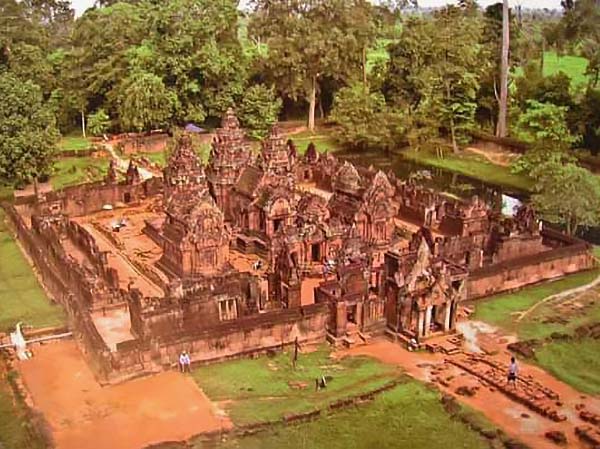
Banteay Srey Temple is a beautiful 10th-century Cambodian temple dedicated to the Hindu god Shiva. It is located in the Angkor archaeological park, about 25 kilometers (16 miles) northeast of the main group of temples near Siem Reap, Cambodia.
The temple is renowned for its intricate and well-preserved decorative carvings, which are considered some of the finest examples of classical Khmer art. Despite its small size compared to other temples in the area, Banteay Srey is highly regarded for the delicacy of its sandstone carvings and the pinkish hue of the stone, which gives the temple its distinctive appearance.
Banteay Srey translates to “Citadel of the Women,” and it is believed that the temple might have been dedicated to the Hindu goddess Shakti, the consort of Shiva. The temple’s compact size and the intricacy of its carvings have led some to speculate that it might have been built by women, though there is no concrete evidence to support this theory.
Banteay Kdei is a temple complex located in Angkor, Cambodia.
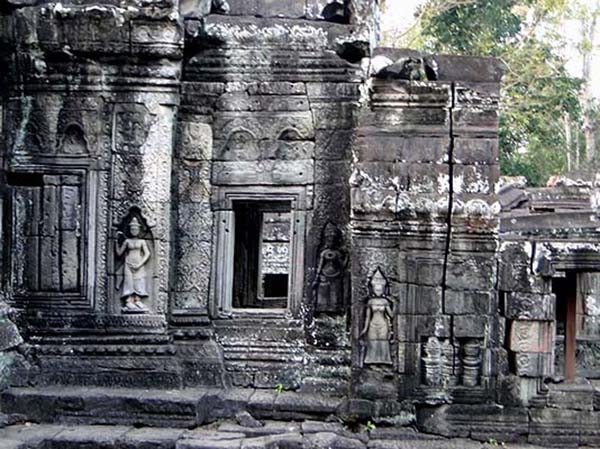
Banteay Kdei is a temple complex located in Angkor, Cambodia. It’s a part of the Angkor Archaeological Park, which is a UNESCO World Heritage Site. Banteay Kdei translates to “Citadel of Chambers” or “Citadel of Monks’ cells” in Khmer. It was built in the 12th century during the reign of King Jayavarman VII, who was known for his extensive building projects. Banteay Kdei is characterized by its relatively small size compared to some of the other temples in Angkor, but it’s still quite impressive. The temple features a central sanctuary surrounded by galleries and corridors. The architecture exhibits a mix of Khmer and Buddhist styles.
One notable feature of Banteay Kdei is its atmospheric qualities, with the temple enveloped in jungle vegetation, giving it a somewhat mysterious and romantic ambiance. Visitors often appreciate its serene atmosphere compared to the more crowded temples in the Angkor complex. Overall, Banteay Kdei offers visitors a chance to explore an ancient Khmer temple in a more tranquil setting, providing a unique experience within the larger Angkor Archaeological Park.
Baphuon Temple Situated northwest of the Bayon.
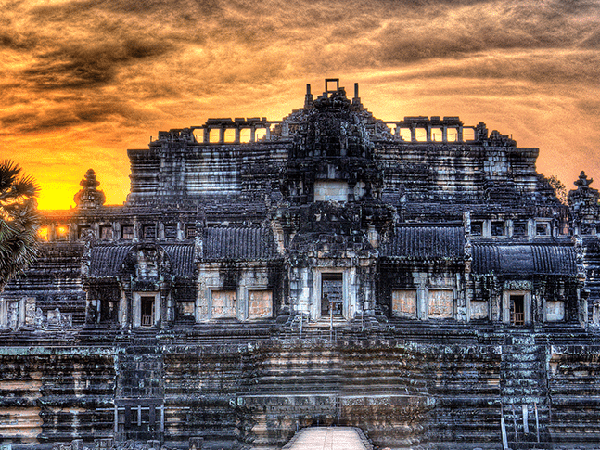
Baphuon Temple is a 12th-century temple complex located in Cambodia. It was built during the Khmer Empire and is a testament to the architectural and artistic achievements of the ancient civilization. The temple is made of brick and sandstone and is designed in a traditional Khmer style, with towering temples, ornate carvings, and intricate sculptures. The Baphuon Temple is considered one of the most important temples in Cambodia and is a UNESCO World Heritage site.
Bat Chum Temple.
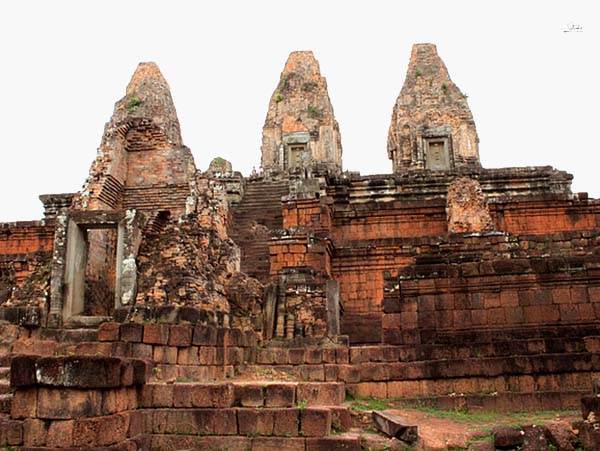
Bat-Chum Temple is a relatively small structure compared to other temples in the area. It consists of three towers arranged in a row.
Bat-Chum Temple in Thailand, also known as the Sien Sin Tew Kuk Temple, is a beautiful Theravada Buddhist temple located in Phetchabun Province. The temple is located close to the Laotian border and is accessible by two bridges. The temple is known for its stunning wooden architecture, colorful murals, and holy caves. While the temple is relatively easy to reach by vehicle or tuk-tuk, some visitors prefer to arrive there on foot through the nearby national park.
Beng Mealea Temple is a spectacular sight to behold it’s one of the most Mysterious temples of Angkor.



